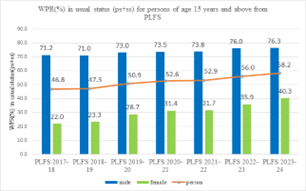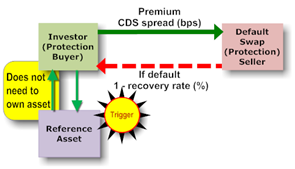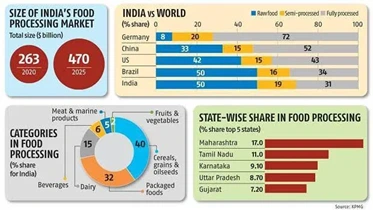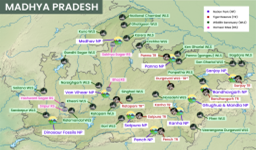Wednesday, 25th September 2024
India – US pact to set up Semiconductor
Why in the news ?
- Recently, India and the US have an agreement to establish a semiconductor fabrication plant to produce chips for national security, next-generation telecommunications, and green energy applications.
Semiconductor Factory (‘Shakti’):
- About :
- Objectives: The ‘Power’ fab facility will focus on advanced sensing, communication and high-performance power electronics, manufacturing infrared, gallium nitride and silicon carbide semiconductors.
- Support and partnership: Sponsored by the Indian Semiconductor Mission, there will be strategic interactions with Bharat Semi, 3rdiTech, and the US. Between the Space Forces.
- Significance:
- Shift in Strategy: India is shifting from a semiconductor importer to a manufacturer and positioning India in the global semiconductor supply chain by enhancing national security.
- Import Reduction: Reduce India’s $1 trillion annual imports for national defence needs.
- Protection measures: Strengthen commercial sectors such as telecommunications, railways and green energy.
- R&D collaboration: To encourage research and development in chip manufacturing, exemplified by projects such as Global Foundries (GF) and Kolkata Power Centre.
About India’s Semiconductor Mission (ISM):
- Financial Outlay: Launch in 2021 with ₹76,000 crore under the Ministry of Electronics and Information Technology (MeitY).
- Purpose: Design a sustainable semiconductor and determine biological systems. Reduce dependence on imports
- Establish India as a global leader in semiconductor manufacturing
- Main Focus:
- Financial assistance for investment:
- semiconductor fabs
- Show the fabs
- semiconductor system
- Assembly, Testing, Marking and Packaging (ATMP) facilities
- Financial assistance for investment:
- Key components of ISM:
- Planning for semiconductor fabs: Provides financial support for semiconductor wafer manufacturing (fabs). It aims to attract large investments in India’s semiconductor sector
- Plans for business fabs: TFT provides financial support for LCD/AMOLED display fabs. It encourages investment in business technology manufacturing
- Scheme of composite semiconductors: It provides 30% capital support for compound semiconductors, silicon photonics, sensors and ATMP/OSAT facilities
- Design Linked Incentive (DLI) Policy: It also provides financial incentives and infrastructure support for semiconductor design.
Source: IE
SC Strengthening Law Against Child Pornography in India
Why in the news ?
- Recently, SC overruled Madras HighCourtruling (2024) that decriminalised possession or viewing of CSEAM in private domain without intent of transmitting under Protection of Children from Sexual Offences (POCSO) Act, 2012 or IT Act, 2000.
The Protection of Children from Sexual Offences (POCSO) Act:
- About:
- It is the first comprehensive law in the country enacted in 2012 for dealing specifically with sexual abuse of children.
- Administered by the Ministry of Women and Child Development, the law is intended to
- Protect children from sexual assault, sexual harassment and pornographic violations.
- Establish Special Courts for such trials.
- In 2019, the Act was amended to strengthen the penalties for specified offences in order to deter abusers and promote a dignified upbringing.
- Key provisions:
- Gender-neutral legislation: The Act defines a child as "any person" under the age of 18.
- Non-reporting is a crime: Any person in charge of an institution (excluding children) who fails to report the commission of a sexual offence involving a subordinate faces punishment.
- No time limit for reporting abuse: A victim may report an offence at any time, even years after the abuse has occurred.
- Keeping victim’s identity confidential: The Act forbids the disclosure of the victim's identity in any form of media unless authorised by the special courts established by the Act.
- Section of the POCSO Act:
- Who stores or possesses pornographic material in any form involving a child, With an intention to share or transmit child pornography,commercial purposes, With a three-to-five-year jail sentence.
- Criminalised CSEAM: Mere possession of CSEAM without any actual transmission is a form of inchoate offence penalised under Section 15 of POCSO Act.
- Section 67B: IT Act penalises child sexual abuse. It provides punishment for publishing or transmitting material depicting children in sexually explicit acts in electronic form.
SC’s Recommendations to the Centre to Address the Issue of Child Pornography:
- Amend the POCSO Act: To replace the term “child pornography” with “child sexual exploitation and abuse material” (CSEAM) to better reflect the nature of the crime.
- Help victims to heal and reintegrate into society: By providing psychological counselling, therapeutic interventions and educational support to victims.
- Introducing cognitive behavioural therapy (CBT) programmes: To help address the cognitive distortions that fuel such behaviour among offenders.
- Promoting coordinated effort: Among educators, health care providers, law enforcement and child welfare services to identify individuals with problematic sexual behaviours early and implement intervention strategies.
- Raising awareness: Public campaigns should aim to de-stigmatise reporting and encourage vigilance within the community.
- Formation of an expert committee: To devise comprehensive programmes for health and sex education and increasing awareness of POCSO among children from an early age.
|
UPSC Civil Services Examination Previous Year Question (PYQ) Prelims Q:1 Which of the following are envisaged by the Right against Exploitation in the Constitution of India?(2017)
Select the correct answer using the code given below:
Ans: (c)
Mains Q:1 Examine the main provisions of the National Child Policy and throw light on the status of its implementation. (2016) |
Source: IE
Periodic Labour Force Survey (PLFS) Annual Report
Why in the news ?
- Recently, the seventh Annual Report is being brought out by NSSO on the basis of Periodic Labour Force Survey conducted during July 2023-June 2024.


The objectives of PLFS :
- To estimate key indicators of employment and unemployment (i.e. labour force, participation rate, unemployment rate) only in the ‘Current Weekly Status’ (CWS) for urban areas over a relatively short period of three months.
- To calculate annual employment and unemployment indices in both the ‘general situation’ and the CWS in rural and urban areas.
Key Indicators used in PLFS:
- Labour Force Participation Rate (LFPR): LFPR is defined as the percentage of persons in the labour force (i.e. working or seeking or available for work) in the population.
- Worker Population Ratio (WPR): WPR is defined as the percentage of employed persons in the population.
- Unemployment Rate (UR): UR is defined as the percentage of persons unemployed among the persons in the labour force.
- Usual Status: The activity status based on a person's activities during the past 365 days before the survey is known as the usual activity status.
- Principal Activity Status (PS): The activity a person spent the most time on during the past 365 days is considered their usual principal activity status.
- Subsidiary Economic Activity Status (SS): If a person engaged in additional economic activity for 30+ days within the last 365 days, it is regarded as their subsidiary economic activity status.
- Current Weekly Status (CWS): The activity status based on the past 7 days before the survey is termed as the current weekly status.
Key Findings:
|
Indicator |
2022-23 |
2023-24 |
Trend |
|
|
LFPR
|
Total |
57.9% |
60.1% |
Increase |
|
Rural |
60.8 % |
63.7% |
Increase |
|
|
Urban |
50.4 % |
52.0% |
Increase |
|
|
Male |
78.5 % |
78.8% |
Increase |
|
|
Female |
37.0 % |
41.7% |
Increase |
|
|
WPR |
Total |
56.0% |
58.2% |
Increase |
|
UR |
Total |
3.2% |
3.2% |
Unchanged |
Source: PIB
5th Anniversary Coalition for Disaster
Why in the news ?
- Recently, the 5th Anniversary of CDRI has launched a $2.5 million initiative to improve urban infrastructure resilience in 30 low-and middle-income countries and Small Island Developing States.
About the Coalition for Disaster Resilient Infrastructure :
- About:
- Launched: At the UN Climate Action Summit in 2019 by India.
- Nature: A global partnership involving nations, UN agencies, multilateral development banks, and the private sector.
- Objective: To promote the resilience of infrastructure systems against climate and disaster risks, ensuring sustainable development.
- Membership: Comprises 40 countries and 7 organisations, with its secretariat located in New Delhi, India.
- Functions: To the Sustainable Development Goals’ imperatives of expanding universal access to basic services, enabling prosperity and decent work.
- Reports Published: Global Infrastructure Resilience Report.
- Impotence of CDRI:
- Complementing the International Solar Alliance (ISA)
- The leadership of Indian for climate Action and Disaster Resilience at the global level.
- Support India’s resilient missions abroad.
- Provide opportunities for Indian infrastructure & technology firms to expand services abroad.
- Need for Disaster Resilient Infrastructure:
- Reduce global disaster mortality.
- Reduce the number of affected people.
- Reduce direct disaster economic loss.
- Reduce disaster damage to critical infrastructure.
Initiatives Taken by CDRI:
- Strategy for Island States Resilience (IRIS): To promote robust, sustainable and inclusive infrastructure in Small Island Developing States (SIDS).
- DRI Connect platform: Knowledge sharing, learning and collaborative platform International Conference on Disaster Management Systems
- (ICDRI): An annual meeting that brings together experts, decision-makers, etc. to discuss challenges and identify best practices.
- Infrastructure Resilience Accelerator Fund (IRAF): Established with support from UNDP and UNDRR, to support global action on disaster resilience based infrastructure infrastructure.
Other Initiatives/steps for Disaster Resilience
- Global:
- Sendai Strategy for Disaster Risk Reduction 2015-2030: provides Member States taking concrete action to protect development gains from risk of disaster.
- United Nations International Program for Disaster Reduction (UNISDR) .
- India:
- National Disaster Management Plan 2009: To Disaster Preparedness a resilient India by building a holistic, dynamic, multi-risk society and a technology-driven approach.
- Disaster Management Act, 2005: Under National Disaster Management Federal Disaster Management Authority, National Disaster Management Authority and National Disaster Management Agency.
Source: HT
Barak Bhuban wildlife sanctuary
Why in the news ?
- Recently the National Green Tribunal’s (NGT) eastern bench in Kolkata has ordered a halt on road construction in Assam's Barak Bhuban wildlife sanctuary.
About Barak Bhuban wildlife sanctuary:
- Location: It is located in Assam's Barak Valley and nestled between the Barak and Sonai rivers.
- Boundary : It is spread across three districts – Cachar, Hailakandi and Karimganj.
- Fauna: Eight primate species, including the slow loris, rhesus macaque, and hoolock gibbon, vital habitat for the king cobra.
Key facts about the Barak Valley:
- Location: Located in southern Assam, the Barak Bhuban Wildlife Sanctuary is named after the Barak River, the largest in the valley and the second largest in Northeast India.
- Border: Its border with other states like Meghalaya in the north, Manipur in the east, Tripura and Mizoram in the south, and Bangladesh in the south.
- Biodiversity: It is a part of the Indo Myanmar biodiversity.
- Area: Approximately 4.8% geographical area of the valley is covered by tea plantations and remaining most of the hillock areas.
- Vegetation: The forests in the valley are tropical evergreen, semi-evergreen, tropical deciduous, and rainforests in the northern and southern eastern parts of the valley.
- Climate: The climate of the valley is characterised by subtropical, warm and humid.
Source: IE
National Consumer Disputes Redressal
Why in the news ?
- The NCDRC recently rejected SBI's request for more time to submit its plea seeking the transfer of a consumer complaint, filed by a Madras HC judge, outside Tamil Nadu.
About National Consumer Disputes Redressal Commission:
- About: It is a quasi-judicial commission set up in 1988 under the Consumer Protection Act of 1986.
- Mandate: To provide inexpensive, speedy, and summary redressal of consumer disputes.
- Headed: It is headed by a sitting or a retired Judge of the SCor a sitting or a retired Chief Justice of a High Court.
- Jurisdiction:
- NCDRC shall have jurisdiction to entertain a complaint valued more than two crore
- Appellate and revisional jurisdiction from the orders of State Commissions or the District fora.
- The provisions of this act cover ‘goods’ as well as ‘services’.
- Who Can File a Complaint: Any consumer association registered under the Companies Act 1956 and the Central Government or any State Government.
- Appeal: Any person aggrieved by an order of NCDRC, may prefer an appeal against such an order to SC within a period of 30 days.
Source: IE
SPICED Scheme
Why in the news ?
- Recently,the Union Ministry of Commerce and Industry has approved a Spices Board scheme, ‘Sustainability in the spice sector.
About SPICED system:
- Objectives: To increase exports of spices and valuables, improve cardamom production, and improve exports of post-harvest spices.
- Term: Until the end of the term of the 15th Finance Commission, 2025-26.
Key Highlights:
- Value Added and Innovation: Sub-programs like Mission Value Addition, Mission Pure and Safe Spices, Promotion of GI Spices, Introduction of Varieties of Spices for Toas
- Target Groups: Focus on farmer groups, FPOs, farmer clusters under ODOP and DEH, SC/ST communities, Northeast region exporters, and SMEs.
- Eligibility: Exporters with a valid CRES, with preference to first-time applicants and SMEs.
- Empowerment Programs: Improve cardamom productivity and post-harvest spice quality, empowering FPOs, FPCs, and SHGs in key spice regions.
- Assistance Focus: Prioritise post-harvest spice improvement and creation of exportable surplus, adhering to food safety and quality standards.
- Transparency: Geo-tag scheme activities; publish fund availability, application status, and beneficiary lists on the Board’s website.
Source: TH
Computer Security Incident Response Team
Why in the news ?
- Recently, Union Minister of Power Shri Manohar Lal has inaugurated CSIRT–POWER facility in New Delhi.
- It was set up under the Central Electricity Authority following the National Cyber Security Policy and in collaboration with CERT-In.
key objectives:
- To serve as the responsible agency for responding to and preventing cybersecurity incidents within the power sector.
- To ensure a prompt and coordinated response to cyber threats in the power sector.
- To collect, analyse, and share information regarding power sector-specific cyber threats.
- To promote sector specific best practices, Standard Operating Procedures (SOPs) and security policies.
- To provide cybersecurity expertise and assistance to constituent utilities.
- To capacity building measures like training, development of standards, drills, collaboration with educational institutions and industry.
- To build awareness and strengthen collective cybersecurity efforts.
Source: PIB
Share the article
Edukemy’s Current Affairs Quiz is published with multiple choice questions for UPSC exams
MCQ
Get Latest Updates on Offers, Event dates, and free Mentorship sessions.

Get in touch with our Expert Academic Counsellors 👋
FAQs
UPSC Daily Current Affairs focuses on learning current events on a daily basis. An aspirant needs to study regular and updated information about current events, news, and relevant topics that are important for UPSC aspirants. It covers national and international affairs, government policies, socio-economic issues, science and technology advancements, and more.
UPSC Daily Current Affairs provides aspirants with a concise and comprehensive overview of the latest happenings and developments across various fields. It helps aspirants stay updated with current affairs and provides them with valuable insights and analysis, which are essential for answering questions in the UPSC examinations. It enhances their knowledge, analytical skills, and ability to connect current affairs with the UPSC syllabus.
UPSC Daily Current Affairs covers a wide range of topics, including politics, economics, science and technology, environment, social issues, governance, international relations, and more. It offers news summaries, in-depth analyses, editorials, opinion pieces, and relevant study materials. It also provides practice questions and quizzes to help aspirants test their understanding of current affairs.
Edukemy's UPSC Daily Current Affairs can be accessed through:
- UPSC Daily Current Affairs can be accessed through Current Affairs tab at the top of the Main Page of Edukemy.
- Edukemy Mobile app: The Daily Current Affairs can also be access through Edukemy Mobile App.
- Social media: Follow Edukemy’s official social media accounts or pages that provide UPSC Daily Current Affairs updates, including Facebook, Twitter, or Telegram channels.





